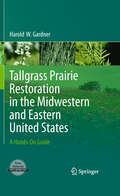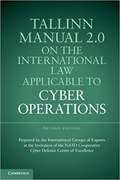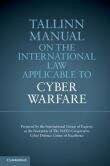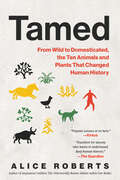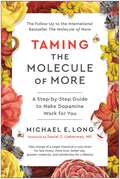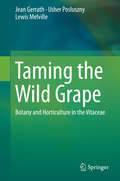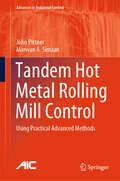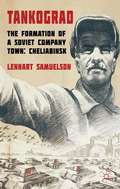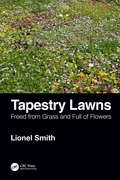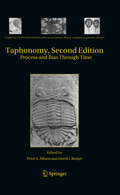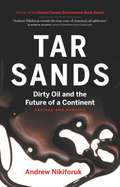- Table View
- List View
Tallgrass Prairie Restoration in the Midwestern and Eastern United States
by Harold GardnerThis work advocates the restoration of the North American tallgrass prairie, which is rapidly disappearing. Historical descriptions of prairie aesthetics are outlined. As we are experiencing a worldwide mixing of plant species, prairie restoration is particularly important. Plants alien to North America do not readily support insect populations, including all animal species higher on the food chain. Prairie restoration methods are described for amateurs, academics, and land managers. Some of the techniques described are growing crops for seed production, times of seed gathering for specific species, facile seed processing for amateurs, land preparation, segregation of seed into its preference for habitat, and required seed treatment for germination. Over 200 species are described that comprise the predominant species found in tallgrass prairie nature preserves, as well as degraded prairies. Some additional plants of especial interest are also described. The appendix tabulates all likely species found on prairies regardless of their scarcity. Safe fire management of prairies is described in detail. Finally, methods of controlling aggressive alien weeds by herbicides are detailed.
Tallinn Manual 2.0 on the International Law Applicable to Cyber Operations
by Schmitt Michael N.Tallinn Manual 2. 0 expands on the highly influential first edition by extending its coverage of the international law governing cyber operations to peacetime legal regimes. The product of a three-year follow-on project by a new group of twenty renowned international law experts, it addresses such topics as sovereignty, state responsibility, human rights, and the law of air, space, and the sea. Tallinn Manual 2. 0 identifies 154 'black letter' rules governing cyber operations and provides extensive commentary on each rule. Although Tallinn Manual 2. 0 represents the views of the experts in their personal capacity, the project benefitted from the unofficial input of many states and over fifty peer reviewers.
Tallinn Manual on the International Law Applicable to Cyber Warfare
by Michael N. SchmittThe product of a three-year project by twenty renowned international law scholars and practitioners, the Tallinn Manual identifies the international law applicable to cyber warfare and sets out ninety-five 'black-letter rules' governing such conflicts. It addresses topics including sovereignty, State responsibility, the jus ad bellum, international humanitarian law, and the law of neutrality. An extensive commentary accompanies each rule, which sets forth the rule's basis in treaty and customary law, explains how the group of experts interpreted applicable norms in the cyber context, and outlines any disagreements within the group as to each rule's application.
Tamed: From Wild to Domesticated, the Ten Animals and Plants That Changed Human History
by Alice RobertsAn “epic and joyous” (Adam Rutherford) history of our species, using recent scientific discoveries to explore humanity’s domestication of the plants and animals that have allowed human civilization to thrive. “An excellent point of entry for anyone who wants to understand the new deep human history and what it portends.”—The Guardian Dogs became our companions. Wheat fed booming populations. Cattle gave us meat and milk. Corn fueled the growth of empires. Potatoes brought feast and famine. Chickens inspired new branches of science. Rice promised a golden future. Horses gave us strength and speed. Apples provided harvestable sweetness. Humans tamed them all. For hundreds of thousands of years, our ancestors were just one wild species among many, their survival dependent on the whims of nature. Then, gradually, we began to tame the plants and animals all around us—and ourselves. Combining genetics, archaeology, evolutionary biology, and anthropology, Tamed tells the story of the greatest revolution in human history, revealing the fascinating origins of crucial domesticated species and how they, in turn, transformed us. Dogs, our first natural ally, aided Ice Age–era hunters and gatherers. Domesticated horses led to new ideas about hunting and combat in the Eurasian Steppe. The reliability of wheat and corn allowed humans to settle down and build civilizations of unprecedented complexity. As she uncovers the astounding global implications of domestication, Alice Roberts urges us to look again at our relationship with the natural world—and our incredible influence upon it.
Tamil Nadu Government Standard 6 Tamil Medium Second Term Science
by Tamil Nadu GovernmentStandard 6 Tamil Medium,Second Term sylabus for the subject Science.
Tamil Nadu Government Standard 8 Tamil Medium Second Term - Science
by Tamil Nadu GovernmentStandard 8 Tamil Medium,Second Term sylabus for the subject Science.
Taming Egg Donors: The Egg Donation Reproductive Market in Spain (Health, Technology and Society)
by Anna MolasSpain has become one of the most prominent fertility markets in the world, largely fuelled by the availability of human eggs. Behind the promise of cutting-edge technology and parenthood lies a carefully tailored system to recruit, manage, and discipline egg donors. In this book, Anna Molas explores how young women are incorporated as egg donors into the global reproductive industry. Through in-depth ethnographic fieldwork with both donors and clinicians, the book reveals the fragile processes of selection, monitoring, and control that ensure the supply of human eggs. Introducing the concept of taming, Molas illuminates the gendered, racialized, and classed dimensions of reproductive labor. Engaging with the political economy of reproduction and the future of reproductive medicine, this book is an essential resource for scholars in medical anthropology, Science and Technology Studies, and feminist studies.
Taming Silicon Valley: How We Can Ensure That AI Works for Us
by Gary F. MarcusHow Big Tech is taking advantage of us, how AI is making it worse, and how we can create a thriving, AI-positive world.On balance, will AI help humanity or harm it? AI could revolutionize science, medicine, and technology, and deliver us a world of abundance and better health. Or it could be a disaster, leading to the downfall of democracy, or even our extinction. In Taming Silicon Valley, Gary Marcus, one of the most trusted voices in AI, explains that we still have a choice. And that the decisions we make now about AI will shape our next century. In this short but powerful manifesto, Marcus explains how Big Tech is taking advantage of us, how AI could make things much worse, and, most importantly, what we can do to safeguard our democracy, our society, and our future.Marcus explains the potential—and potential risks—of AI in the clearest possible terms and how Big Tech has effectively captured policymakers. He begins by laying out what is lacking in current AI, what the greatest risks of AI are, and how Big Tech has been playing both the public and the government, before digging into why the US government has thus far been ineffective at reining in Big Tech. He then offers real tools for readers, including eight suggestions for what a coherent AI policy should look like—from data rights to layered AI oversight to meaningful tax reform—and closes with how ordinary citizens can push for what is so desperately needed.Taming Silicon Valley is both a primer on how AI has gotten to its problematic present state and a book of activism in the tradition of Abbie Hoffman&’s Steal This Book and Thomas Paine&’s Common Sense. It is a deeply important book for our perilous historical moment that every concerned citizen must read.
Taming the Molecule of More: A Step-by-Step Guide to Make Dopamine Work for You
by Michael E. LongFeatured on The Next Big Idea Club&’s April 2025 Must-Read BooksDopamine, &“the molecule of more,&” makes it easy to get stuck in a cycle of never being truly satisfied. It promises happiness, but can never deliver. That part is up to us. A more fulfilling life begins with training your brain to overcome the dopamine chase—and it&’s easier than you think.From Michael E. Long, coauthor of the life-changing book The Molecule of More, comes this guide with practical solutions to the problem. Based on the latest neuroscience, it will teach you to overcome the most troubling aspect of our biological programming. You&’ll learn to: Stop being held captive to the lure of social media and gaming Use multitasking in ways that increase your productivity—not hamper it Avoid the pitfalls that plague dating life—or refresh interest in the romance you already have Stop compulsive shopping, online and otherwise Break the cycle of doomscrolling and crush your obsession with the news Grow your creativity and call it up when you need it most What if we could harness our struggles and our triumphs toward satisfaction for a lifetime? Taming the Molecule of More delivers a method to begin a more fulfilling life—right now.
Taming the Wild Grape
by Jean Gerrath Usher Posluszny Lewis MelvilleThis book places grapes in the context of their family, the Vitaceae. It begins by focusing on the relationship of the family to other angiosperms and the interrelationships and characteristics of its genera. Two chapters emphasize the structure and development of its major vegetative and reproductive characteristics. Keys and illustrated descriptions for 19 North American species including 10 Vitis are provided. The three chapters on Vitis begin with a brief history of grape growing, with emphasis on North America. There is an illustrated life history of grape, following the two-year cycle from bud initiation to fruit maturity. The final chapter discusses the history of grapevine identification in North America, concluding with descriptions and illustrations of 30 important North American cold climate cultivars. The book is a general resource for understanding the growth, development, life history, and identification of grapes and the Vitaceae.
Tampa Bay: The Story of an Estuary and Its People (Florida in Focus)
by Evan P. BennettExploring the environmental history of an important natural area The largest open water estuary in Florida, Tampa Bay has been a flashpoint of environmental struggles and action in recent years. This book goes beneath today’s news headlines to explore how people have interacted with nature in the region throughout its long history. In Tampa Bay, Evan Bennett reveals that humans have been part of the bay’s ecology since the estuary took its modern form 2,000 years ago, along with the communities of fish, birds, reptiles, and mammals that proliferated in its seagrass meadows, tidal salt flats, and mangrove forests. Bennett discusses the natural resources that drew people to settle there, the trade that encouraged development, and the shipping and industry that increased biological and ecological change. While the past 150 years have seen serious environmental damage from dredging, water pollution, red tides, and more, Bennett shows how people have been fighting to clean up the bay and regain a balance with nature. Informed by the latest in marine science, area environmentalists, policymakers, and citizens are working to create a model for other societies that have developed in fragile natural areas. The first book to examine the environmental history of the region, Tampa Bay uncovers deep-rooted relationships between water, land, and people and offers hope for bringing threatened coastal spaces back from the brink. A volume in the series Florida in Focus, edited by Andrew K. Frank
Tandem Hot Metal Rolling Mill Control: Using Practical Advanced Methods (Advances in Industrial Control)
by Marwan A. Simaan John PittnerTandem Hot Metal Rolling Mill Control is a response to the significant control engineering challenges posed by the nature and circumstances of the hot metal strip rolling process. The process is large, complex, multivariable and nonlinear with significant disturbances and subject to multiple situationally dependent time delays all of which are exacerbated by the demands of an ever-more-competitive marketing environment for its product. The book provides innovative solutions not available with previously existing methods of control. It introduces new advanced control methods, including a nonlinear control method based on an advanced state-dependent Riccati equation technique coupled with virtual rolling to improve performance during various regimes of mill operation. The book begins with a brief history of metal rolling and an overview of the tandem hot metal rolling process. It then discusses process models, including physical-system and state-space equations, and control methods currently being used in tandem rolling. The exposition of the new advanced control method uses figures and simulations to facilitate thorough understanding of the methods and their applicability in the real world. The final chapter concludes with a brief discussion of variable-speed drives as typically used in modern installations. Although sufficient mathematical treatment is provided to support the development of novel concepts, the presentation is not highly mathematical, making the text readily understandable and useful to a variety of readers in both academic and practical engineering milieux.
Tank: The 10 War Machines That Changed the World and the Remarkable Men Behind Them
by Mark Urban‘Punchy. Trenchant. Heavyweight. Mark Urban’s Tank blows the doors off, just as you’d expect from such an accomplished author. Take cover!’ Damien Lewis, author of SAS Great EscapesAn authoritative history of the tank and the remarkable individuals who designed them and fought in them, from a former officer and best-selling historianTanks are the ultimate embodiment of industrial age warfare. In the popular imagination, they represent both a terrifying beast of destruction and a potent symbol of liberation.The technology behind these war machines has evolved relentlessly, and yet the coming of the information age has led many to predict that drones, missiles, and Artificial Intelligence have made the tank obsolete. Time and again, however, tanks have continued to shape – and be shaped by -- battles around the world, from their introduction in 1916, through the Second World War and tank-on-tank fights in 1990s Iraq, to the current conflict in Ukraine.In TANK, best-selling historian and former officer in the Royal Tank Regiment Mark Urban draws on wide-ranging accounts from soldiers, designers, and politicians, from Winston Churchill to Volodymyr Zelensky, to tell the remarkable story of one of the most important developments in military history. Through the ten most important vehicles ever made, Urban chronicles the incredible advances in tank technology – starting with the Mark IV, the first British tank to be used in large numbers in WW1, and following the story through the T-34 and Tiger to the M1 Abrams, a product of huge American Cold War investment that is still used to this day.Officially supported by The Tank Museum and using never-before-seen archival sources, interviews and declassified documents, this is a fascinating history of the vehicle that changed conflict forever.‘An illuminating and exciting drive through the mud and blood of twentieth-century warfare' Dr Robert Lyman, author of Operation Suicide
Tankograd
by Lennart SamuelsonA major production site of Soviet KV and T-34 tanks in WWII, the town of Cheliabinsk in the Urals was nicknamed 'Tankograd', its civilian machine-building factories swiftly converted to arms production. This book gives a social, economic and political panorama that describes everyday life in a typical Soviet company town during the Stalin era.
Tanks: A Century of Tank Warfare (Casemate Short History)
by Oscar E. Gilbert Romain V. Cansière&“For all the history buffs on warfare of the last century, Tanks is a perfect choice . . . packed with fascinating information&” (San Francisco Book Review). This Casemate Short History—by the authors of Tanks in Hell: A Marine Corps Tank Company on Tarawa—provides an informative and entertaining introduction to this iconic weapon of the last hundred years. Tanks first ventured into battle on the Somme in 1916, and by the end of the war, countries were beginning to choose &“heavy&” or &“light&” tank designs to suit their preferred doctrine. Design then stagnated until World War II brought about rapid change. Tanks would prove integral to fighting in almost every theater; the Germans swept across Europe using tanks to spearhead their blitzkrieg method of war, until Soviet tanks proved more than their match and led to some epic tank battles on a huge scale. After World War II, tank designs became increasingly sophisticated and armor undertook a variety of roles in conflicts, with mixed results. American armor in Korea was soon forced into an infantry support role, which it reprised in Vietnam, while Soviet armor was defeated in guerrilla warfare in Afghanistan. However, tanks played a pivotal role in the American &“shock and awe&” doctrine in two wars in Iraq, and tanks remain a crucial weapons system on the battlefield. &“Comprehensive despite its conciseness. For example, it addresses the employment of tanks in lesser-known conflicts such as the Indio-Pakistani and Sino-Vietnamese wars. The book provides context for contemporary tank operations and offers a perspective on the way ahead.&” —Military Review
Tao Classic of Longevity and Immortality: Sacred Wisdom and Practical Techniques
by Zhi Gang ShaWe all want long, healthy, happy, and productive lives. What are the spiritual principles and ancient wisdoms needed to achieve this? A Tao Grandmaster distills the essential knowledge from thousands of years of sages and introduces powerful new insights and accessible practices to help you achieve longevity and even move in the direction of immortality, while never losing sight of the true purpose of our existence. How can longevity be best attained? Is immortality possible? What is the true reason we should want longevity, and even to strive for immortality? How can we do it? The spiritual principles and practical techniques from thousands of years of ancient wisdom, together with powerful new insights and a "how to" practice that will actually yield results, are distilled into this book. Very few will actually attain immortality, but in following the principles and practices in this book, every aspect of life will benefit.
Tap Water as a Hydraulic Pressure Medium
by Erik Trostmann"Showcases the beneftis and potential advantages of water hydraulics over oil-based media. Interweaves examples and excercises throughout the text to illustrate critical concepts, with helpful appendices on abbreviations, symbols, conversion factors, and water contaminants, and glossary sections."
Tapestry Lawns: Freed from Grass and Full of Flowers
by Lionel SmithSwathes of the human world are covered in ornamental grass lawns; they are the single most commonly encountered horticultural feature on the planet. Unfortunately, they are now often viewed as resource-draining green deserts due to the lack of plant and animal diversity, the need for frequent mowing and watering, and addition of lawn greening products to keep them looking at their best. It is a venerable horticultural feature that is essentially frozen in time, and with few alternatives to whet the appetite, the lawn has languished in its current grass-only format for decades. Until now. Tapestry lawns are a new, practically researched and timely development of the ornamental lawn format that integrates both horticultural practice and ecological science and re-determines the potential of a lawn. Mown barely a handful of times a year and with no need for fertilisers or scarifying, tapestry lawns are substantially richer in their diversity of plant and animal life compared to traditional grass-only lawns and see the return of flowers and colour to a format from which they are usually purposefully excluded. Tapestry Lawns: Freed from Grass and Full of Flowers traces the changes in the lawn format from its origins to the modern day and offers information on how and why the tapestry lawn construct is now achievable. It provides guidance on how to create and maintain a tapestry lawn of your own and champions the potential benefits for wildlife that can follow. Features Accessible and informative to all types of readers from academic to amateur Includes a refined and tested set of useful tapestry lawn plants Contains step-by-step instructions for creation and management methods of grass-free lawns Illustrated in full colour If you have ever thought about mowing your lawn much less, making it much more colourful and wildlife friendly, then this book will inform and guide you to create a perfect, grass-free lawn.
Taphonomy
by David J. Bottjer Peter A. AllisonTaphonomic bias is a pervasive feature of the fossil record. A pressing concern, however, is the extent to which taphonomic processes have varied through the ages. It is one thing to work with a biased data set and quite another to work with a bias that has changed with time. This book includes work from both new and established researchers who are using laboratory, field and data-base techniques to characterise and quantify the temporal and spatial variation in taphonomic bias. It may not provide all the answers but it will at least shed light on the right questions.
Taphonomy of Human Remains: Forensic Analysis of the Dead and the Depositional Environment
by Nicholas Márquez-Grant Eline M.J. Schotsmans Shari L. ForbesA truly interdisciplinary approach to this core subject within Forensic Science Combines essential theory with practical crime scene work Includes case studies Applicable to all time periods so has relevance for conventional archaeology, prehistory and anthropology Combines points of view from both established practitioners and young researchers to ensure relevance
Tapirs of the World: Ecology, Conservation and Management (Fascinating Life Sciences)
by Mario Melletti Rafael Reyna-Hurtado Patrícia MediciThis beautifully illustrated book is the first comprehensive work ever published on all four tapir species worldwide, filling a gap in the scientific literature. The book provides information on the systematics, phylogeny, evolution, ecology, conservation, and management of all tapir species. This volume is aimed at a wide range of readers, including researchers, wildlife managers, zoologists, conservation biologists, ecologists, veterinarians, zoo staff, students and environmental policy makers.
Tapping the Pines: The Naval Stores Industry in the American South
by Robert B. Outland IIIThe extraction of raw turpentine and tar from the southern longleaf pine -- along with the manufacture of derivative products such as spirits of turpentine and rosin -- constitutes what was once the largest industry in North Carolina and one of the most important in the South: naval stores production. In a pathbreaking study that seamlessly weaves together business, environmental, labor, and social history, Robert B. Outland III offers the first complete account of this sizable though little-understood sector of the southern economy. Outland traces the South's naval stores industry from its colonial origins to the mid-twentieth century, when it was supplanted by the rising chemicals industry. A horror for workers and a scourge to the Southeast's pine forests, the methods and consequences of this expansive enterprise remained virtually unchanged for more than two centuries.An important part of the timber products trade, naval stores were originally used primarily in shipbuilding and maintenance. Over the course of the nineteenth century, these products came to be used in myriad ways -- including in the manufacture of paint thinner, soap, and a widely popular lamp oil -- and demand soared. In response, North Carolina producers enlarged their operations and expanded throughout the Southeast, especially into Georgia and Florida, but the short-term economic development they initiated ultimately contributed to long-term underdevelopment.Outland vividly describes the primitive harvest and production methods that eventually destroyed the very trees the trade relied upon, forcing operators to relocate every few years. He introduces the many different people involved in the industry, from the wealthy owner to the powerless worker, and explores the reliance on forced labor -- slavery before the Civil War and afterwards debt peonage and convict leasing. He demonstrates how the isolated forest environment created harsh working and living conditions, making the life of a turpentine hand and his family exceedingly difficult. With an exacting attention to detail and exhaustive research, Outland offers not only the first definitive history of the naval stores industry but also a fresh interpretation of the socioeconomic development of the piney woods South. Tapping the Pines is an essential volume for anyone interested in the region.
Taproots - Underlying Principles of Milton Erickson's Therapy and Hypnosis
by William Hudson O'HanlonThe author, who knew Ericson, makes since of Ericson's work and style for other psychologists and persons interested in incorporating Ericsonian techniques into therapy. Proposes a framework for understanding Ericson. Many case studies are provided.
Tar Sands
by Andrew NikiforukTar Sands critically examines the frenzied development in the Canadian tar sands and the far-reaching implications for all of North America. Bitumen, the sticky stuff that ancients used to glue the Tower of Babel together, is the world's most expensive hydrocarbon. This difficult-to-find resource has made Canada the number-one supplier of oil to the United States, and every major oil company now owns a lease in the Alberta tar sands. The region has become a global Deadwood, complete with rapturous engineers, cut-throat cocaine dealers, Muslim extremists, and a huge population of homeless individuals.In this award-winning book, a Canadian bestseller, journalist Andrew Nikiforuk exposes the disastrous environmental, social, and political costs of the tar sands, arguing forcefully for change. This updated edition includes new chapters on the most energy-inefficient tar sands projects (the steam plants), as well as new material on the controversial carbon cemeteries and nuclear proposals to accelerate bitumen production.
Tarangire: Human-Wildlife Coexistence in a Fragmented Ecosystem (Ecological Studies #243)
by Christian Kiffner Monica L. Bond Derek E. LeeThis edited volume summarizes multidisciplinary work on wildlife conservation in the Tarangire Ecosystem of northern Tanzania. By drawing together human-centered, wildlife-centered, and interdisciplinary research, this book contributes to furthering our understanding of the often complex mechanisms underlying human-wildlife interactions in dynamic landscapes. By synthesizing the wealth of knowledge generated by anthropologists, ecologists, conservationists, entrepreneurs, geographers, sociologists, and zoologists over the last decades, this book also highlights practicable and locally adapted solutions for shaping human-wildlife interactions towards coexistence. Readers will discover the reciprocal and often unexpected direct and indirect dynamics between people and wildlife. While boundaries (e.g. between people and wildlife, between protected and un-protected areas, and between different groups of people) are a common theme throughout the different chapters, this book stresses the commonalities, links, and synergies between seemingly disparate disciplines, opinions, and conservation approaches. The chapters are divided into clear sections, such as the human dimension, the wildlife dimension and human-wildlife interactions, representing a detailed summary of anthropological, ecological, and interdisciplinary research projects that have been conducted in the Tarangire Ecosystem over the last decades. Beyond, this work contributes to the debate about land-sharing versus land-sparing and provides an in-depth case study for understanding the complexities associated with human-wildlife coexistence in one of the few remaining ecosystems that supports migratory populations of large mammals. The topic of this book is particularly relevant for students, scholars, and practitioners who are interested in reconciling the needs of human populations with those of the environment in general and large mammal populations in particular.
